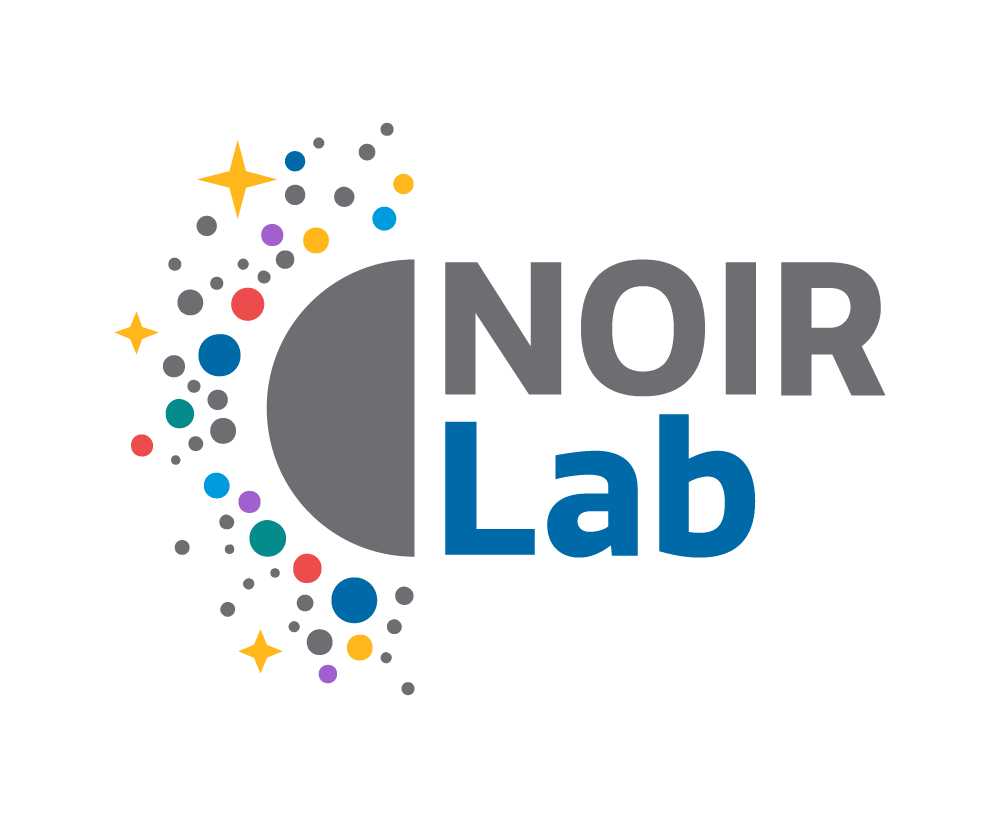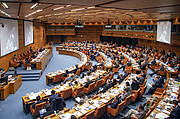UN Meeting Features Satellite Impact on Astronomy
A key UN body on which IAU and SKAO are represented included on its agenda discussions of the impact of satellite constellations on astronomy for the first time
20 February 2025
Last week twenty members of the United Nations Committee on the Peaceful Uses of Outer Space (UN COPUOS) — the top UN body for civilian space-related matters — took the floor to discuss the agenda item on dark and quiet skies, demonstrating its growing importance. The discussion included remarks on the need to find balanced solutions, the urgent need for nations to support research on mitigations, considerations on the cultural heritage of the night sky, and the importance of space sustainability discussions within international bodies. In attendance were members of the IAU Centre for the Protection of the Dark and Quiet Sky from Satellite Constellation Interference (IAU CPS), which is co-hosted by NSF NOIRLab and the SKAO.
Securing an agenda item at the subcommittee is a significant success for the astronomy community, and the culmination of many years of coordinated action by astronomers to have the issue discussed at the highest international level.
The Scientific and Technical Subcommittee of UN COPUOS has agreed to discuss “Dark and Quiet Skies, astronomy and large constellations: addressing emerging issues and challenges” annually until 2029. The subcommittee meets for two weeks and has representatives from 104 countries and 51 observer organizations, including the IAU and SKAO, as well as CPS member organizations; the European Southern Observatory and European Astronomical Society. Representatives from industry were also invited by delegations to contribute.
A paper, co-signed by 10 country delegations and seven observer organizations represented in the Group of Friends of the Dark and Quiet Sky for Science and Society, details collaborative efforts which are underway to mitigate the impacts of satellites on astronomy, including the development of a worldwide database of radio quiet zones. The paper also provides actionable recommendations for COPUOS members to advance the protection of dark and quiet skies, including supporting the development of designs and materials which can reduce satellites’ impact, and supporting research to understand the effects on all stakeholders, both professional and non-professional. The paper’s recommendations are largely aligned with those developed by the IAU CPS.
More information
The IAU is the international astronomical organization that brings together more than 12,000 active professional astronomers from more than 100 countries worldwide. Its mission is to promote and safeguard astronomy in all its aspects, including research, communication, education and development, through international cooperation. The IAU also serves as the internationally recognised authority for assigning designations to celestial bodies and the surface features on them. Founded in 1919, the IAU is the world's largest professional body for astronomers.
The International Astronomical Union’s Centre for the Protection of the Dark and Quiet Sky from Satellite Constellation Interference (IAU CPS) is a global organization co-hosted by the US-based NSF’s NOIRLab and the SKA Observatory (SKAO), under the auspices of the IAU. The CPS facilitates global coordination of efforts by the astronomical community in concert with observatories, space agencies, industry, regulators and other sectors to help mitigate the negative consequences of satellite constellations on astronomy.
NSF NOIRLab, the U.S. National Science Foundation center for ground-based optical-infrared astronomy, operates the International Gemini Observatory (a facility of NSF, NRC–Canada, ANID–Chile, MCTIC–Brazil, MINCyT–Argentina, and KASI–Republic of Korea), NSF Kitt Peak National Observatory (KPNO), NSF Cerro Tololo Inter-American Observatory (CTIO), the Community Science and Data Center (CSDC), and NSF–DOE Vera C. Rubin Observatory (in cooperation with DOE’s SLAC National Accelerator Laboratory). It is managed by the Association of Universities for Research in Astronomy (AURA) under a cooperative agreement with NSF and is headquartered in Tucson, Arizona.
The scientific community is honored to have the opportunity to conduct astronomical research on I’oligam Du’ag (Kitt Peak) in Arizona, on Maunakea in Hawai‘i, and on Cerro Tololo and Cerro Pachón in Chile. We recognize and acknowledge the very significant cultural role and reverence of I’oligam Du’ag to the Tohono O’odham Nation, and Maunakea to the Kanaka Maoli (Native Hawaiians) community.
The SKAO, formally known as the SKA Observatory, is an inter-governmental organization composed of Member States from five continents. Its mission is to build and operate cutting-edge radio telescopes to transform our understanding of the Universe, and deliver benefits to society through global collaboration and innovation. Headquartered in the UK, its two telescope arrays will be constructed in Australia and South Africa and be the two most advanced radio telescope networks on Earth. Through the development of innovative technologies and its contribution to addressing societal challenges, the SKAO will play its part to address the United Nations’ Sustainable Development Goals and deliver significant benefits across its membership and beyond. The SKAO recognises and acknowledges the Indigenous peoples and cultures that have traditionally lived on the lands on which the SKAO facilities are located.
Links
- IAU Centre for the Protection of the Dark and Quiet Sky from Satellite Constellation Interference
- Announcement by SKAO
Contacts
Piero Benvenuti
IAU CPS Director
Email piero.benvenuti@cps.iau.org
Mathieu Isidro
IAU CPS Communications and Outreach Lead
Phone: +44 7824 016 126
Email: mathieu.isidro@skao.int
Josie Fenske
Jr. Public Information Officer
NSF NOIRLab
Email: josie.fenske@noirlab.edu


